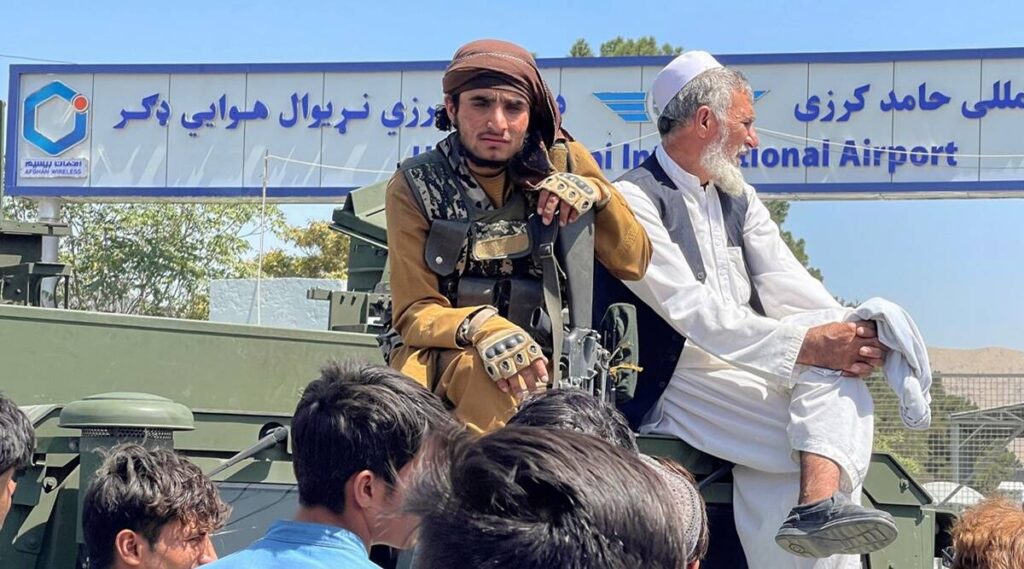
The Taliban’s media-savvy spokespersons send deceptive signals that appear socially and politically acceptable, while the organisation continues to pursue their military, ideological objective on the ground
As the Taliban take over Kabul for the second time in three decades, many questions are waiting to be answered. One that has occupied important editorial spaces across the world is that of the Taliban makeover — “has the Taliban really changed?” This is a hugely important question as the answer to this would have implications for tens of thousands of Afghans, especially women. Many voices including within the Taliban claim it has learnt from its mistakes and is now more pragmatic and less extremist.
A study of the Taliban’s official statements and tweets since the beginning of Doha negotiations in 2018 reveals the transition from a rabble-rousing ragtag band to a politically mature group, apparently sensitive to the world opinions. Last week, the new Taliban governor of Ghazni, while replying to a question told the media persons that the “current Taliban is not the same as it used to be”. But is this transition genuine?
The fact is that the Taliban has changed. However, this change is not reflective of any ideological moderation or military flexibility. The Taliban has learnt the art of sound byte diplomacy. It has realised that without international recognition, the regime won’t survive for long. This resulted in a softening of its rhetoric. But this makeover is skin deep. It portrays the Taliban as a moderate version of its previous self and thus more acceptable to the world. As the Taliban was making rapid military advances by taking over town after town, its spokespersons were issuing statements about a firm commitment to the peaceful transition in Kabul. Such tactful diplomatic (read hypocritical) positioning has helped the Taliban to create an international constituency, which is at least willing to give it a chance. Ironically, the Taliban learnt these lessons from its main enemy — the West.
Many experts believe that the Taliban used the peace negotiations to alter its image from a terrorist organisation to a legitimate opposition movement in a bid to gain more freedom of action. Once confined to hideouts in Pakistan and blacklisted by the United Nations, Taliban leaders began travelling freely from Pakistani cities of Lahore and Karachi to the Middle East to raise funds and build new alliances. Such travels and exchanges, some believe, expanded the political and intellectual horizon of the Taliban leadership. The opening of its office in Doha, which opened doors for its leaders to engage with the world along with back-channel dialogues with various governments, also helped the Taliban learn about international diplomacy. The successful outcome of prisoner exchange negotiations with the US also convinced many US policymakers that peace was possible with the Taliban. There was also a sense that the Taliban had realised that there were different workable governance models available around the Islamic world that seem adoptable where they would not have to relinquish their ideology altogether. Moreover, the narrative of a changed Taliban was also fanned by certain sections in the US policymaking sector, which was based on a convergence of interests, especially Washington’s rush to exit Afghanistan. All this gave some credence to the narrative of the Taliban had changed.
And changed they have. Media savvy spokespersons can send deceptive signals that appear socially and politically acceptable, while the organisation continues to pursue their military objective. Many in the West held the belief that it was possible to socialise the Taliban by exposing them to the modern world, paving the way for the former to accept new ways of doing politics and governance. And here the Taliban delivered exactly as per the West’s expectation. They quickly adapted to modern tools like social media and other technological innovations but only to achieve their political and military objectives. They learnt the diplomatic jargon: Phrases like “general amnesty”, “women’s rights”, “negotiations”, “peaceful Afghanistan” and “people’s aspirations” became the Taliban’s go-to vocabulary as they interacted with the western media.
By participating in numerous multilateral and bilateral political negotiations, and by publicly sending high-level delegations to China and Russia, the Taliban started attaining political legitimacy. The public displays of their acceptance by governments around the world indirectly gave them international legitimacy.
The makeover of Taliban 2.0 as moderate and reformed quickly vanishes once you dig a little deeper. As the Taliban forces began to enter Kabul this Sunday, Suhail Shaheen, one of the official spokespersons of the Taliban, reached out to a BBC presenter to assure the people of Afghanistan that there will be no “revenge” and that women could go to the universities as teachers and students if they followed the rules of hijab. But when the BBC presenter informed Shaheen that women were not allowed to enter the gates of Herat University after the Taliban took over the city, Shaheen coldly replied, “What I am telling you is the policy.”
